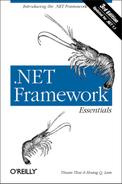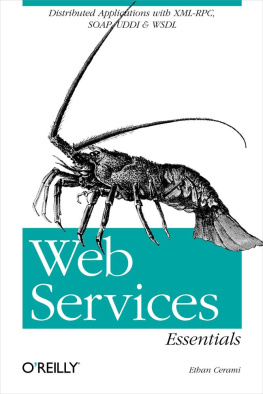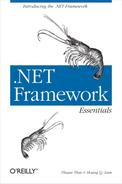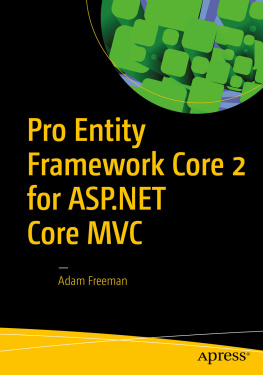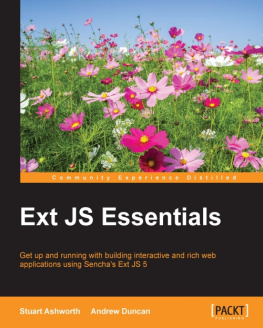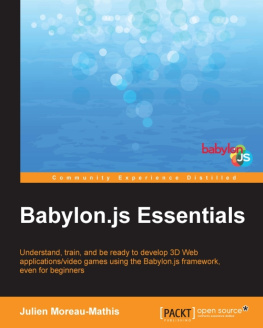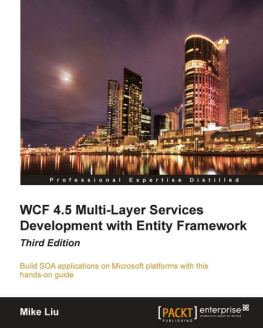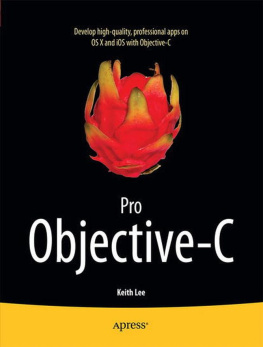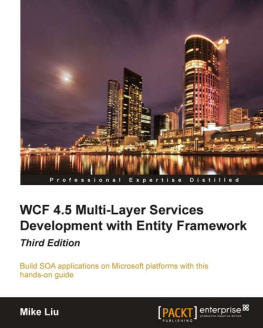Although this book is for any person interested in learning about theMicrosoft .NET Framework, it targets seasoned developers withexperience in building Windows applications with Visual Studio 6 andthe Visual Basic and Visual C++ languages. Java andC/C++ developers will also be well prepared for the materialpresented here. To gain the most from this book, you should haveexperience in object-oriented, component, enterprise, and webapplication development. COM programming experience is a plus.
About This Book
Based on a short course that Thuan has delivered to numerouscompanies since August 2000, this book is designed so that eachchapter builds on knowledge from the previous one for thoseunfamiliar with each technology. To give you a heads-up, here arebrief summaries for the chapters and appendixes covered in this book.
takes a brief look at Microsoft .NETand the Microsoft .NET Platform. It then describes the .NET Frameworkdesign goals and introduces you to the components of the .NETFramework.
lifts the hood and peers into the CLR.This chapter surveys the rich runtime of the CLR, as well as otherfeatures.
introduces you to .NET programming.Youll examine a simple program that usesobject-oriented and component-based concepts in five differentlanguages: Managed C++, VB.NET, C#, J#, and IL.Youll also experience the benefits of languageintegration.
demonstrates the simplicity ofcomponent and enterprise development in .NET. Besides seeing thecomponent-deployment features of the .NET Framework,youll also find complete programs that takeadvantage of transaction, object pooling, role-base security, andmessage queuingall in one chapter.
describes the architecture of ADO.NETand its benefits. Besides being disconnected to promote scalability,the ADO.NET dataset is also tightly integrated with XML to enhanceinteroperability. This chapter introduces you to the .NET data-accessobjects, as well as the XML namespace.
describes how .NET software componentscan be accessed through the Internet. In this chapter, we discuss theprotocols that support web services, as well as how to publish anddiscover them. You will see how XML, used in conjunction with HTTP,breaks the proprietary nature of typical component-oriented softwaredevelopment and enables greater interoperability.
introduces you to ASP.NET, which nowsupports object-oriented and event-driven programming, as opposed toconventional ASP development. In this chapter, Web Forms and servercontrols take the center stage. In addition, we examine how to buildcustom server controls, perform data binding to various .NETcontrols, and survey state management features in ASP.NET.
takes conventional form-basedprogramming a step into the future with the classes in theSystem.Windows.Forms namespace. Similar to Win32-based applications,Windows Forms are best used to build so-called rich orfat clients; however, with thenew zero-effort installation procedure of .NET and the advent of webservices, Windows Forms are appropriate for a host of applications.
shows you how to build an ASP.NETapplication that targets smart devices and a mobile deviceapplication that is backed by SQL Server CE.
contains a list of links to web sites withinformation regarding languages that target the CLR, including someburgeoning open-source projects.
contains a list of commonly used acronymsfound in .NET literature and presentations.
contains several lists of commonly useddata types in .NET. This appendix also illustrates the use of several.NET collection classes.

